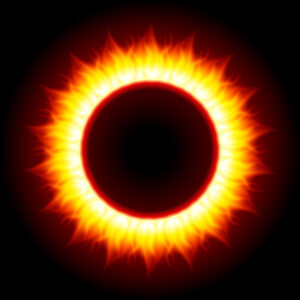“We can work better without the batteries.”
Those were the astonishing words relayed by a telegraph operator in Boston on Sept. 2, 1859, when a massive solar flare from the sun knocked out telegraph lines all over the world, throwing the nascent global communication network into darkness.
The solar flare a day earlier resulted in the most intense geomagnetic storm in recorded history. In a stunning display of the storm’s raw power, the Boston operator discovered that he and a fellow telegraphist in Maine could continue conversing even after their power had been severed simply by utilizing what they called “the auroral current.”
In the mid-19th century, telegraphs were the only large-scale electric systems in use, meaning the effects of the 1859 flare were limited to the relatively limited network of telegraph lines in place through Europe and North America. The agrarian economy of the day rolled on without even taking note.
On the other hand, a geomagnetic storm of similar magnitude in the modern world could prove devastating on a scale that’s hard to comprehend. With nearly all of the modern economy dependent upon electricity in various forms, widespread outages—including damaged generations and ruined transmission lines—could leave the planet in darkness for months, leading to population-level deaths of millions of people.
It is not clear how likely that scenario is. Martin Connors, a professor of astronomy, mathematics, and physics at Athabasca University, said that although “a rare event is never to be ruled out,” the likelihood of such an event “is low.”
“If there is going to be anything remotely comparable, it would likely happen in the next few years,” he said, noting that the Solar System is approaching the solar maximum, part of the sun’s regular 11-year solar cycle.
Huw Morgan, the physics director of research and head of solar system physics at Aberystwyth University in Wales, said in the case of an event like that of 1859, “there would be widespread disruption.”
“Some components of the power grids in some regions will be affected, likely leading to widespread power cuts,” he said. “How long it would take to fix depends, of course, on the scale of the damage.”
Both Morgan and Connors noted authorities have systems in place to head off potential catastrophic damage from solar events. Morgan said teams of scientists “continuously monitoring the Sun” to detect flares and coronal mass ejections.
“This provides a few hours to days of warning, so the power grid operators can respond appropriately,” Morgan said. “This involves the routing of power at substations, so there is less chance of components failing.”
Connors said we are “still improving our understanding of how damage occurs” and that energy grids “are operated in a sophisticated manner that can take advantage of our developing knowledge.”
“Parts of the grid that might be problematic can be temporarily shifted out of the network for their own protection,” he said, adding that the growing use of “smaller, decentralized power sources” helps “[spread] the risk out.”
Questions of grid security receive broad attention from a diverse range of interest groups. Organizations like the Secure the Grid Coalition are composed of what STG calls “policy, energy, and national security experts, legislators, and industry insiders” determined to enhance the resiliency of the American electrical grid.
Doug Ellsworth, co-director of STG, said stations have utilized “solid grounding” systems in order to protect transformers from harmful surges of any source, coronal or otherwise.
“There’s been one at a station between Wisconsin and the Upper Peninsula in Michigan,” he said. “It has kicked off and done its job every time it has been called upon to do it.”
Powerful solar flares occur multiple times per year. One was most recently observed at the end of last month, with NASA classifying it as an “X-class” flare, which it said is the “most intense” type.
A 2011 report from the Department of Energy stated that “without doubt, a major geomagnetic storm will again hit Earth.” But the DOE said it “found no reason to think it would be catastrophic” on power transmission, pointing to technologies such as series capacitors and other “relaying schemes” to handle power overloads.
Bill Richardson, the former secretary of energy under Bill Clinton, said energy authorities need to be “at least thinking about prevention” and ensuring “contingency plans” are in place for a potential solar catastrophe.
“The possibility seems remote,” he said, “but at the very least, you have to be prepared. You have to have some strategy.”
Though a comparable incident has not happened since, the 1859 event still looms large as a display of the sun’s raw power and the Earth’s vulnerability.
Years later, one gold miner told an Australian newspaper that the aurora produced by the storm was “a sight never to be forgotten” and a vision of “nature in her most exquisite robes.”
To others, he noted, the experience was one of “dire forebodings” and “a foreshadowing of Armageddon and final dissolution.”




